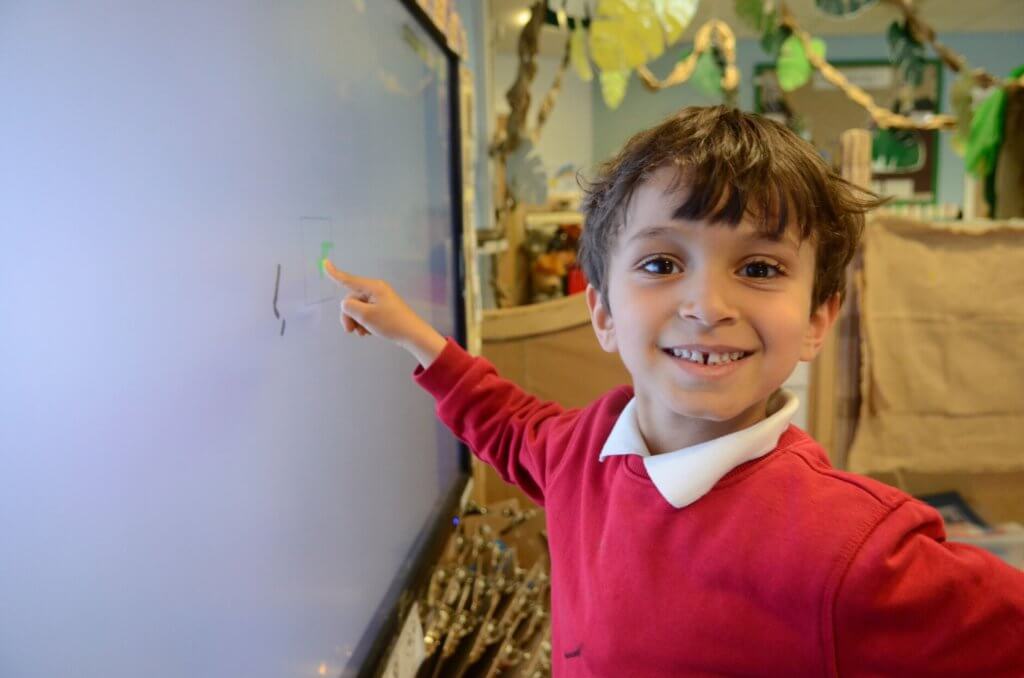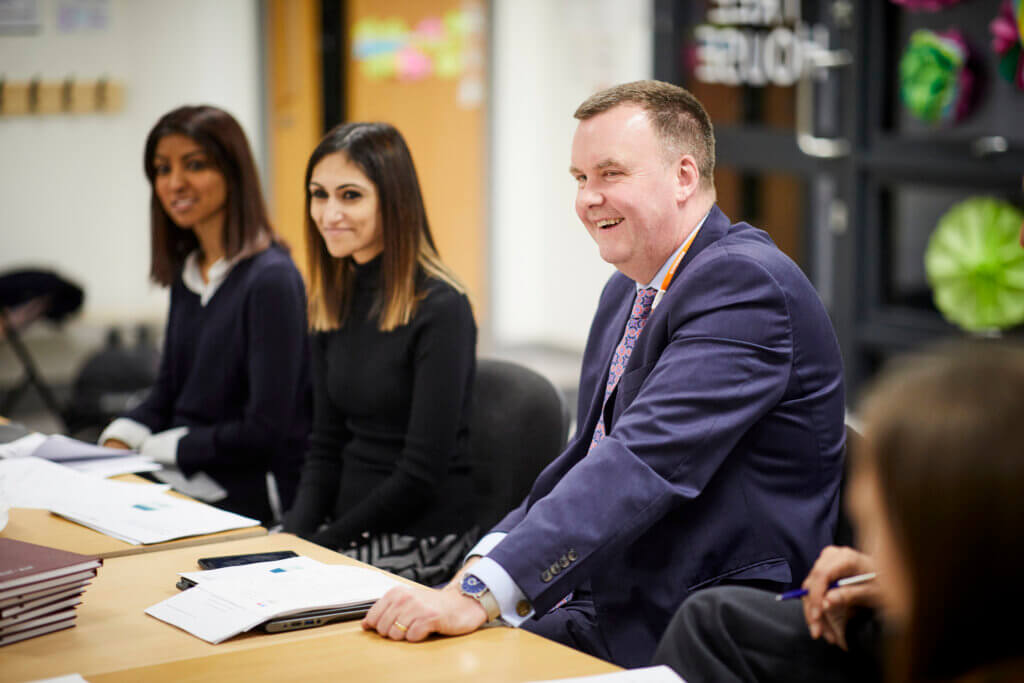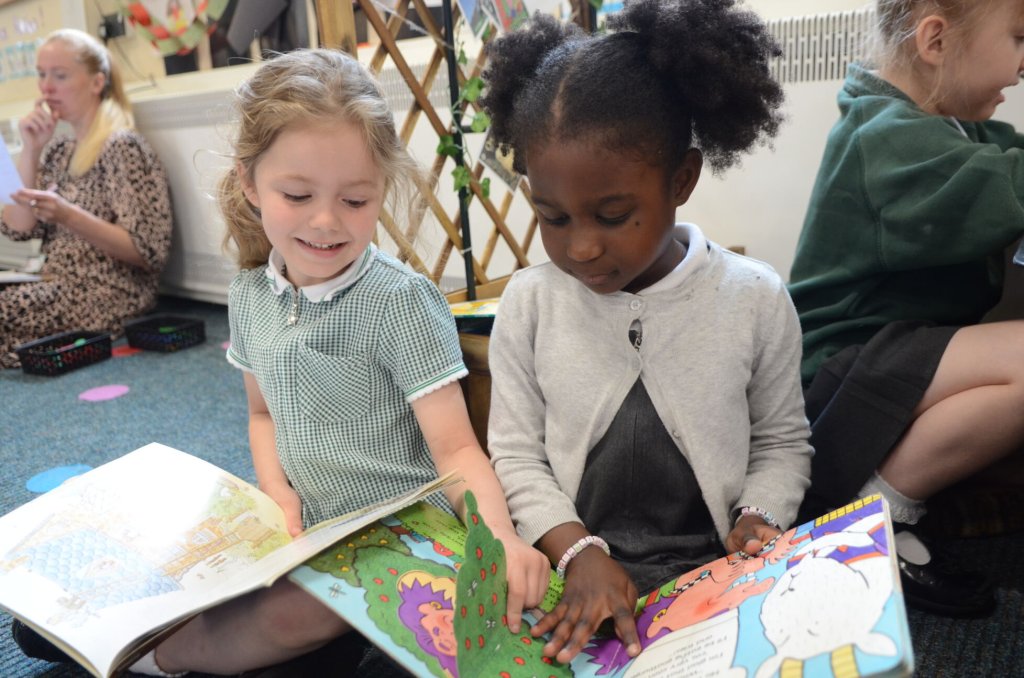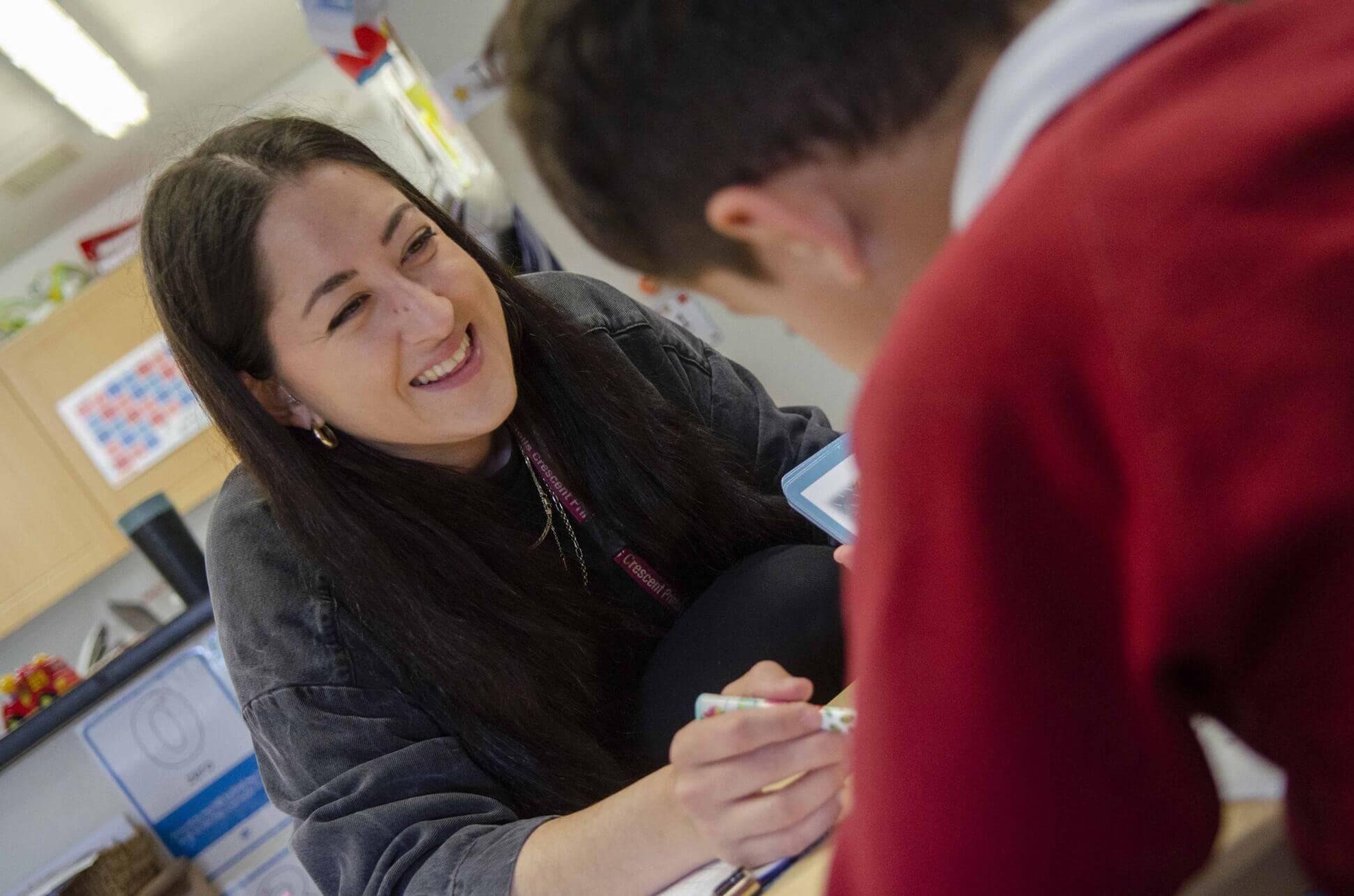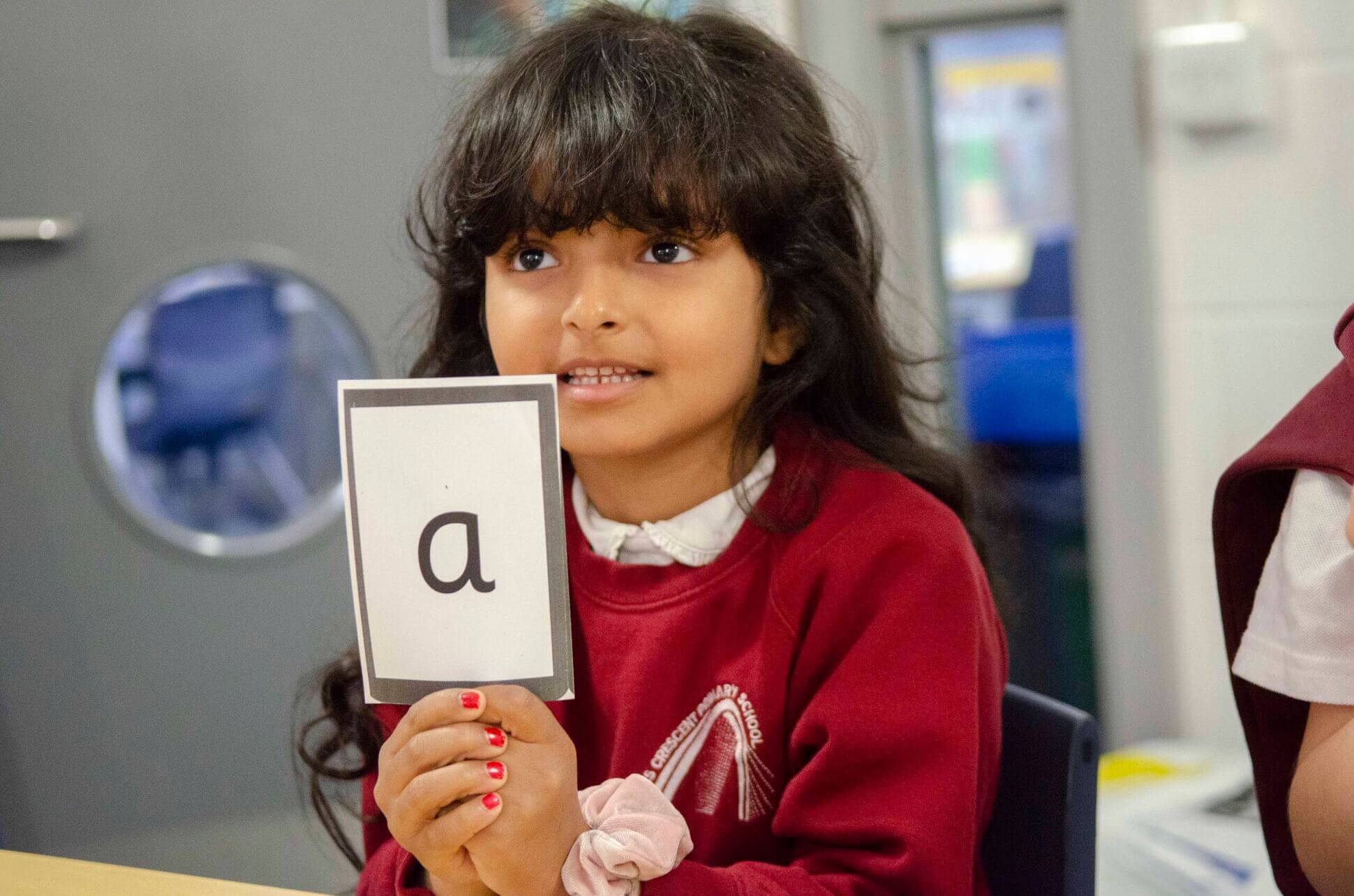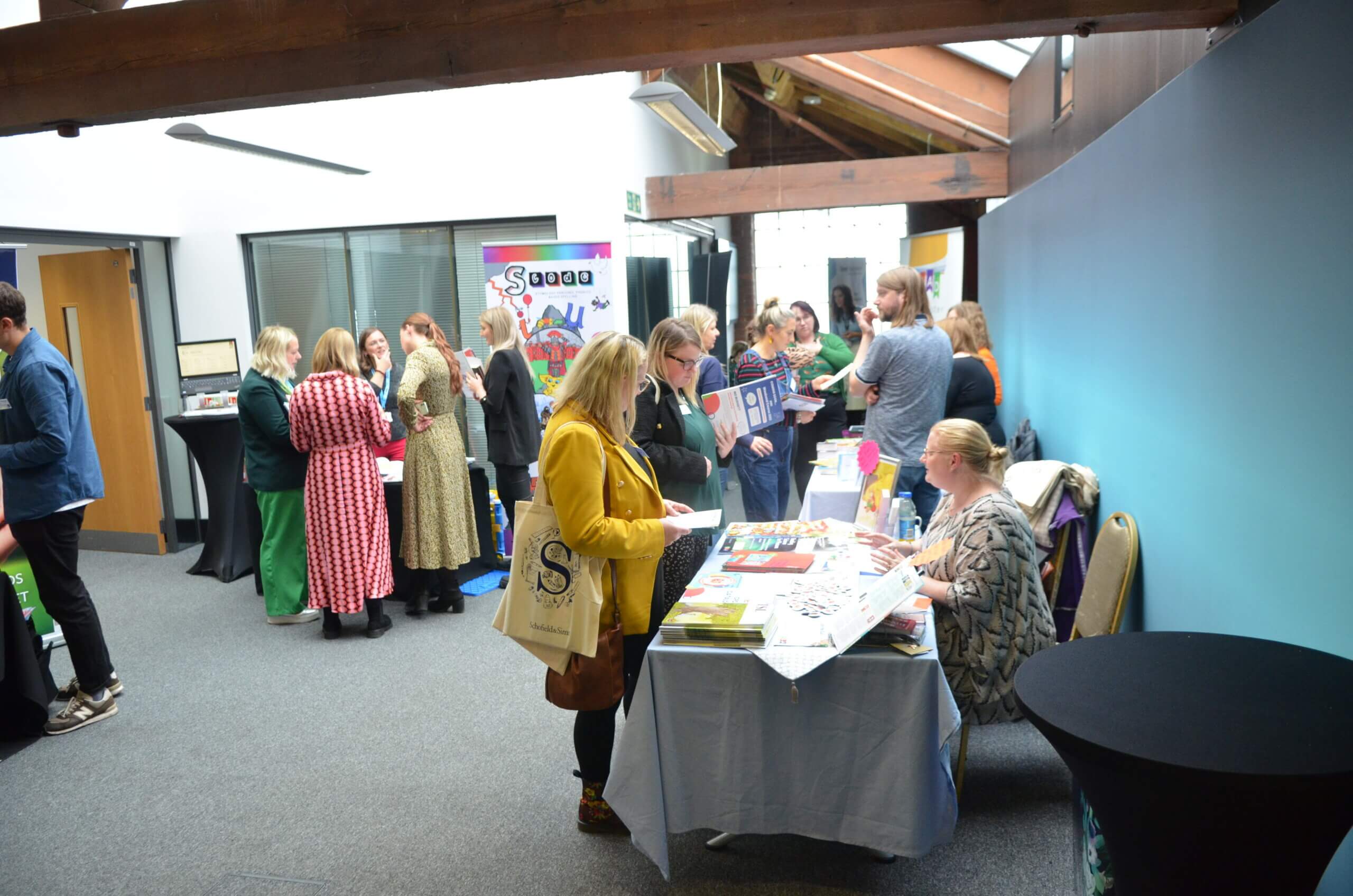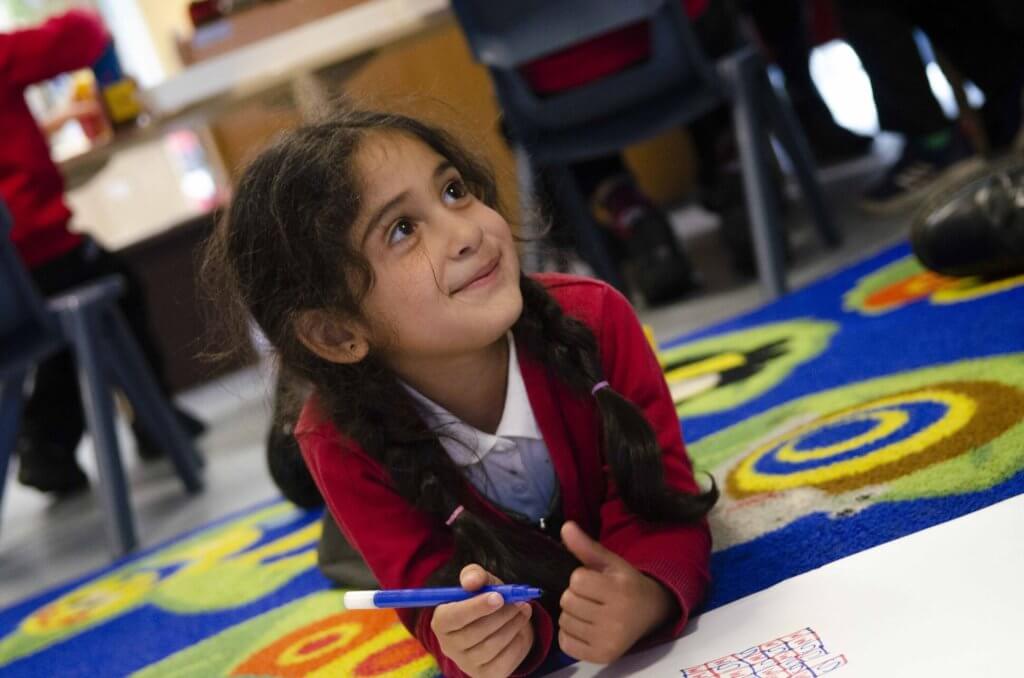This blog should be read after Part 1 and Part 2.
Reading Gems Part 1: Our reading approach
Reading Gems Part 2: Teaching reading in primary school
There is no doubt that the teaching of early reading is incredibly important, yet it is a tricky area to master. Finding the balance between the teaching of decoding and developing an understanding of what is being read is a careful undertaking for teachers. The Early Years Foundation Stage (EYFS) statutory framework was revised in 2021, with the Early Learning Goals (ELGs) being expanded to show the importance of word reading and comprehension. As we are aware, to be able to read you need to have good word recognition and good language comprehension.
Book talk, exploration of stories, poems and non-fiction books and the opportunity for children to choose their own books to develop a love of reading is an important part of supporting comprehension. Modelling your own thought process of retrieving information from a text or inferring how a character feels, and encouraging children to do the same, can also help in the teaching of reading.
But how can we do this whilst juggling the teaching of phonics at the same time?
The sections below explore suggestions as to how we do this in line with One Education’s Reading Gem approach.
Nursery:
- Understanding what is being read should be developed mainly through being fully immersed in stories.
- Through continuous provision, such as role play and small world play, children can bring story books to life.
- There should be a focus on shared reading, where children join in with reading part of the book (such as a repeated phrase or rhyme).
- Children can be taught to anticipate key events; talk about word meanings and related words; recognise repetition and rhyme; recognise how stories are structured; and learn how to handle books.
- These shared reading sessions are in addition to phase 1 phonics and should not replace any phonic sessions.
- Text choices should excite and engage, building on background knowledge and experiences.
- Emphasis should be on enjoyment and building a love of reading.
- Links to initial phonics should be made e.g., rhyme, sound isolation etc.
- A member of staff will be reading this with the children, so there is no need for the shared text to always be phonically decodable.
Reception:
- There should be more of the same as there was in Nursery (and this should continue throughout primary school)
- Teaching of Reading Gems must start off slowly: not all children have to start at the beginning of Reception.
- Have a maximum of four to five children in a group (you may want to start off with fewer).
- Reading Gem sessions only need to be for five minutes at a time, where book blether and discussing questions about what have been read is central. Remember, the aim is to encourage children to love books and develop a love of reading.
- Slowly increase the length of time of the sessions – but only when the children are ready.
- Small groups with a teacher or teaching assistant, whilst the other children access continuous provision, would be most beneficial.
- Repeated reads help with fluency, strategies and skills in understanding what is being read.
- This is in addition to direct teaching of phonics and reading decodable books.
End of Reception/Y1
Many schools teach their discrete phonics sessions and have small reading groups based on a child’s ability to decode texts which children may read and talk about. As we all know though, the simple view of reading indicates a child may be competent in decoding but not confident in understanding what is being read. In addition to reading decodable texts, the children may have two or three whole class reading sessions within story time, where the session focuses on a high-quality text or an extract that will expose children to a variety of genres, topics and information. This can also be done within small groups in the classroom.
The structure may be as follows:
Section One: Get Ready
As Reading Gems Part 2 explores, children should be hooked into the new text in order to build excitement about what they are about to read. For ideas about how you may do this please look at the hook a book in our downloadable resources. This session should focus on the background knowledge children would need to understand the text. For example, before reading Little Red Riding Hood, children might need to know what a wolf is and that wolves do not usually talk or wear Granny’s clothing!
You may also want to share the vocabulary that children need to understand when listening to the story. Do they, for example, understand what a forest is or who a woodcutter is? You may want to discuss a few of the key words, show them images or have the children act out words.
You could then ask the children to predict what may happen in the story and build up the excitement.
Section Two: Time to Talk
On day two children will hear the story, first just listening to what is being read, and then again whilst the teacher models their thinking, asking questions such as “I wonder what will happen next?” and model their thought process to show how they make links and connections as they read. “The wolf has got in Granny’s bed; I hope the wolf doesn’t eat Little Red Riding Hood.” The teacher could then ask children questions and support them in answering these. The discussion may be linked to decoding strategies, strategies and skills for understanding or they may be about links to other stories/texts they have heard or experiences they have had.
Session Three: Book Club
On day three the teacher may want to re-read the story or ask the children to retell it to each other. It is important for young children to hear stories more than once, to help them in developing reading fluency and reducing the cognitive load of hearing and understanding unfamiliar words or a new story structure. This means they are more able to focus on reading comprehension.
There may also be the opportunity for children to discuss the links to other stories they have heard, share books that connect to the book being explored and read for pleasure with other children in their class, or with older children from other year groups.
Moving through Year One
As children move through Year One, the teacher may start to think of developing a session to explore the text in further detail (see part 2). For this, model answers in addition to verbalising their thought process are key to help children begin to see the children might also be able to complete small group or individual activities based on a reading strategy or skill – for example they may act out how characters are feeling, answer questions based on what they have read, or sequence cards to retell the story.
The idea behind these short activities is that, until they are ready for longer sessions, this structure can be used in small groups throughout the week or as a whole class in story time. The discussion does not need to be long; as mentioned, five minutes may be enough at the start of the year!
Year Two Onwards…
As children progress into Year Two it is likely that they will be ready for the full Reading Gem approach, as explored in Part Two here.
- If, by January in Year Two, phonics is still being taught, children who still require phonics input are likely to need a reading intervention group in addition to their phonics lessons to ensure that their comprehension and decoding skills continue to progress.
- Many schools teach whole class reading from this point onwards (with some starting earlier) and use one book/extract for the class reading skills session aimed at a higher level than the children’s reading ability for a week. Children may need adaptive teaching strategies to help support them in this, including pre-teaching, scaffolds and additional opportunity to practice independent skills.
The best structure for your school depends on your timetable, the available adults and the cohort you have. Both can work extremely well.
What is important to remember throughout all of this, is that reading is a skill for life and as educators we need to be able to carefully construct a magical, awe-inspiring reading curriculum that excites children and help them to develop a love of reading through discussion, questioning, vocabulary and background knowledge.
By teaching a child to decode without a focus on comprehension, there is a danger that children will not understand what they read. Comprehension adds meaning to what is read and turns words into ideas, inspiration and knowledge – it is what makes readers for life.
How can One Education help?
The teaching of reading is essential; it is a way of helping children to spark a passion for books, a thirst for knowledge, and the desire to become a lifelong learner. The curriculum content that teachers must cover is vast but if a consistent, thorough approach to reading is embedded across the school, it can have a profound impact on the entire curriculum. If you would like advice on how to create an approach that is tailored to the needs of your school or would like to book a staff training session then please email Jo Gray, Head of Educational Development at: jo.gray@oneeducation.co.uk
The resources shared in this blog post are part of a much larger selection available as part of One Education’s Reading Award.
Coming Soon: Reading Gems Part 4 – KS3
Free Reading Gems Resources
Click the link below to download five additional Reading Gems resources.
Please complete the form below and we will get in contact as soon as we can to help you with your query.
